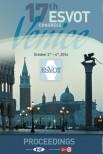OBJECTIVE: To report the evaluation, surgical planning, and outcome for correction of a complex limb deformity in the tibia of a donkey using computed tomographic (CT) imaging and a 3D bone model.
STUDY DESIGN: Case report.
ANIMALS: A 1.5-year-old, 110 kg donkey colt with an angular and torsional deformity of the right pelvic limb.
METHODS: Findings on physical examimation included a severe, complex deformity of the right pelvic limb that substantially impeded ambulation. Both hind limbs were imaged via CT, and imaging software was used to characterize the bone deformity. A custom stereolithographic bone model was printed for preoperative planning and rehersal of the surgery. A closing wedge ostectomy with de-rotation of the tibia was stabilized with 2 precontoured 3.5-mm locking compression plates. Clinical follow-up was available for 3.5 years postoperatively.
RESULTS: CT allowed characterization of the angular and torsional bone deformity of the right tibia. A custom bone model facilitated surgical planning and rehearsal of the procedure. Tibial corrective ostectomy was performed without complication. Postoperative management included physical rehabilitation to help restore muscular function and pelvic limb mechanics. Short-term and long-term follow-up confirmed bone healing and excellent clinical function.
CONCLUSION: CT imaging and stereolithography facilitated the evaluation and surgical planning of a complex limb deformity. This combination of techniques may improve the accuracy of the surgeons' evaluation of complex bone deformities in large animals, shorten operating times, and improve outcomes.









